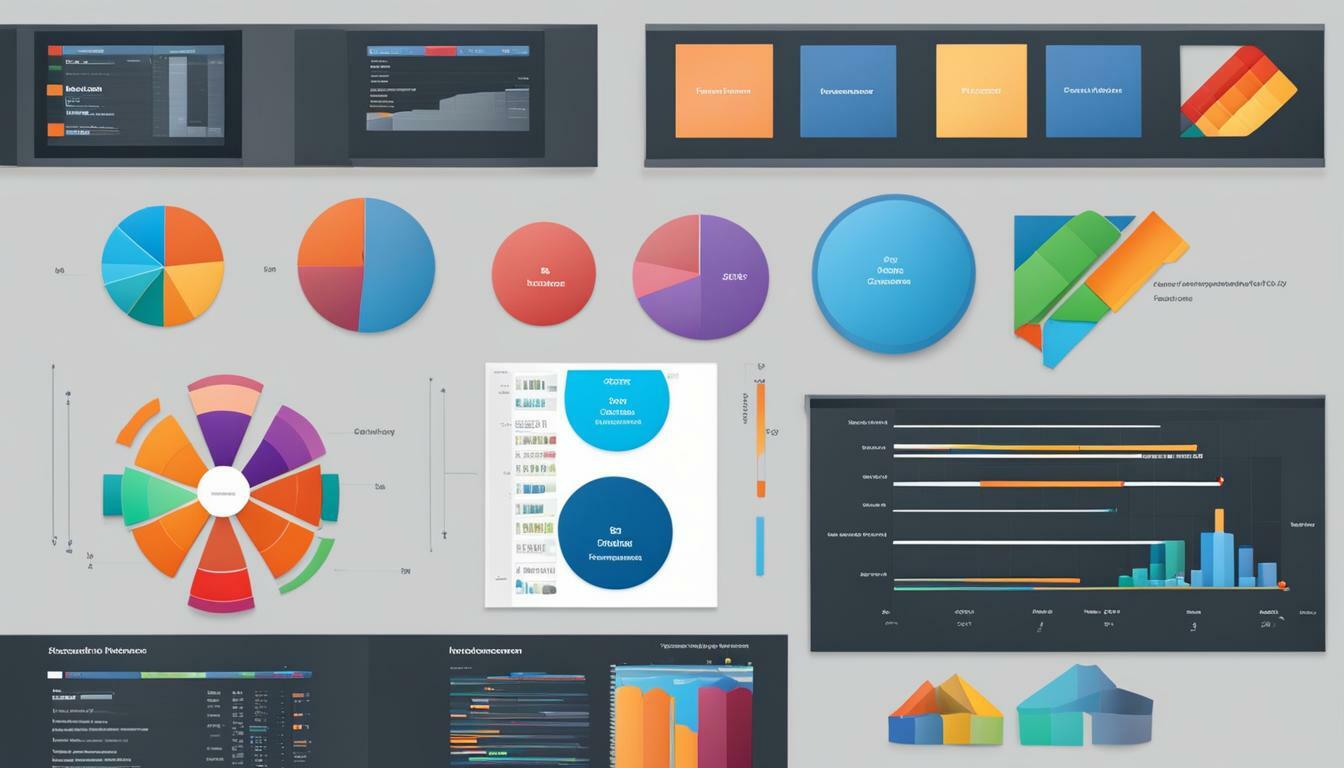Introduction to SQL and NoSQL Databases
Data management systems play a pivotal role in handling vast amounts of information efficiently and effectively. These systems are responsible for storing, retrieving, manipulating, and organizing data in various formats.
Two prominent types of data management systems are SQL (Structured Query Language) databases and NoSQL (Not only SQL) databases. These databases offer distinct approaches to data storage and retrieval, each with its own set of advantages and use cases.
Brief Overview of Data Management Systems
Data management systems serve as the backbone for managing structured as well as unstructured data. They provide a platform for businesses to store their critical information securely while ensuring speedy access whenever required. Traditional relational databases such as Oracle, MySQL, PostgreSQL fall under the SQL category, whereas newer variants like MongoDB, Cassandra, CouchDB fall under the NoSQL umbrella.
Definition and Purpose of SQL Databases
SQL databases are based on the relational model that organizes data into tables consisting of rows and columns. The structured nature of these databases ensures consistent schemas where each piece of information resides in its designated place within predefined tables.
The primary purpose behind using SQL databases is to establish strong relationships between entities through primary keys and foreign keys. This facilitates efficient querying using the standardized Structured Query Language.
Definition and Purpose of NoSQL Databases
NoSQL databases emerged in response to new challenges that traditional SQL databases faced when handling large-scale distributed systems or unstructured data sources. Unlike their relational counterparts, NoSQL databases adopt various non-tabular structures such as key-value stores, document-oriented models, column-family stores or graph-based representations. The purpose behind using NoSQL is to provide flexibility in schema design while enabling horizontal scalability across multiple servers or clusters.
Understanding SQL Databases
Relational database model in SQL
In the world of data management, SQL databases are based on the relational database model. This means that the data is organized into tables, which consist of rows and columns. Think of a table as a spreadsheet, where each row represents a single record or entity, and each column represents a specific attribute or characteristic of that record.
For example, if you have a table for customers, each row could represent an individual customer with columns such as name, address, email, and phone number. The relational model allows for efficient organization and retrieval of data by establishing relationships between tables through the use of primary keys and foreign keys.
Explanation of tables, rows, and columns
Tables are at the heart of SQL databases. They provide structure to store and organize data in an orderly fashion. Each table consists of rows (also known as records) and columns (also known as fields).
Rows represent individual instances or records within a table, while columns define the attributes or properties associated with those records. Going back to our customer example from before, if we had five customers stored in a table named “Customers,” each customer would be represented by a separate row with various columns like “Name,” “Address,” “Email,” etc. The combination of rows and columns creates a grid-like structure for efficient data storage.
Primary keys and foreign keys in SQL databases
To establish relationships between different tables in an SQL database, we use primary keys and foreign keys. A primary key is a unique identifier for each record within a table.
It ensures that no two rows have the same value for this key attribute. Primary keys help distinguish between records when querying or updating data across multiple tables within the database.
On the other hand, foreign keys are attributes within one table that refer to primary keys in another table. They create a link or a relationship between the tables.
For example, if we have two tables, “Customers” and “Orders,” the “CustomerID” column in the “Orders” table can be a foreign key that references the primary key (often just called “ID”) in the “Customers” table. This linkage allows us to retrieve information about customers and their associated orders easily.
Structured Query Language (SQL)
SQL, which stands for Structured Query Language, is the language used to interact with SQL databases. It provides a standardized syntax and set of commands for creating, querying, updating, and deleting data within a relational database.
With SQL, you can create new tables or modify existing ones using commands like CREATE TABLE or ALTER TABLE. Queries are an essential part of SQL as they allow you to retrieve specific data from one or multiple tables using SELECT statements.
For example, if you want to fetch all customer names from the “Customers” table where they live in New York City, you could write a query like: SELECT Name FROM Customers WHERE City = ‘New York City’;
In addition to querying data, SQL also enables you to update existing records using UPDATE statements and delete unnecessary records using DELETE statements. These CRUD (Create, Read, Update, Delete) operations make SQL databases dynamic and responsive.
ACID properties in SQL transactions
One crucial aspect of SQL is its adherence to ACID properties in transactions. ACID stands for Atomicity, Consistency, Isolation, and Durability; these properties ensure reliable data management. Atomicity guarantees that either all changes within a transaction occur successfully or none at all.
It prevents partial execution of transactions that could lead to inconsistent states within the database. Consistency ensures that only valid data is written into the database by enforcing predefined rules or constraints defined during schema design.
If any modification violates these rules, the transaction is rolled back, and the original state is maintained. Isolation ensures that concurrent transactions do not interfere with each other.
Each transaction is executed in isolation, as if it were the only one running, to prevent conflicts and maintain data integrity. Durability guarantees that once a transaction is committed and changes are made permanent, they persist even in the event of system failures or crashes.
The changes are recorded in a durable form to ensure data reliability. These ACID properties provide reliability, consistency, and robustness to SQL databases when handling critical data operations.
Exploring NoSQL Databases
In the world of data management, NoSQL databases have emerged as a popular alternative to traditional SQL databases. These non-relational databases offer flexibility, scalability, and efficient handling of large volumes of data. Let’s delve into the different types of NoSQL databases and understand their unique characteristics.
Key-value stores: simplicity and scalability
Key-value stores are one of the simplest forms of NoSQL databases. They store data as a collection of key-value pairs, where each value is associated with a unique key. This design allows for quick retrieval and storage of data, ideal for scenarios where speed is crucial.
Key-value stores excel in scenarios like caching frequently accessed data or session management in web applications. Redis and Riak are popular examples known for their high performance and ability to scale horizontally by adding more nodes to distribute the load.
Document-oriented databases: flexible schema design
Document-oriented databases, such as MongoDB or CouchDB, take a different approach by storing semi-structured or unstructured data in documents similar to JSON (JavaScript Object Notation) format. These documents can have varying schemas within the same collection, allowing flexibility when dealing with evolving or complex data structures. Document-oriented databases are well-suited for scenarios like content management systems (CMS), where each document represents an article with different fields like title, author name, body text, etc., without enforcing a strict structure across all documents.
Column-family stores: wide column-based storage
A column-family store database organizes data using columns rather than rows found in traditional relational databases. The columns are grouped into column families that can be independently stored on disk and queried efficiently together or separately.
Apache Cassandra is a prominent example of this type of database that provides exceptional write performance and horizontal scalability. Column-family stores are favored for use cases involving massive amounts of data, such as time series data, logging, or recommendation systems.
Graph databases: relationship-focused data representation
Graph databases, such as Neo4j or Amazon Neptune, are specifically designed to handle highly connected data and complex relationships between entities. They represent data using nodes (entities or objects) and edges (relationships between nodes).
This structure allows for efficient querying of relationships and traversing through the graph-like structure. Graph databases are commonly used in applications like social networks, recommendation engines, fraud detection systems, or knowledge graphs.
NoSQL query languages or APIs
NoSQL databases often have their own query languages or APIs tailored to their specific database models. For example, MongoDB uses a JSON-like query language that allows developers to express complex queries with ease by using operators like $eq (equals), $in (in array), $gt (greater than), etc. On the other hand, Cassandra employs CQL (Cassandra Query Language), which is similar to SQL but adapted for the distributed nature of the database. These query languages provide powerful ways to interact with NoSQL databases while offering different syntax and functionalities compared to SQL in relational databases.
Data Model: Structure vs Flexibility
When it comes to data organization, SQL and NoSQL databases take different approaches. SQL databases follow a structured model, where data is organized into tables with predefined schemas.
Each table consists of rows and columns, making it ideal for managing structured data that follows a strict format. On the other hand, NoSQL databases offer more flexibility in organizing data.
They embrace a schema-less approach, allowing for dynamic changes in the structure of data as needed. This makes NoSQL suitable for handling unstructured or semi-structured data that may vary in format.
Query Language: SQL vs NoSQL
In the world of relational databases, Structured Query Language (SQL) reigns supreme. It provides a standardized way to interact with SQL databases by offering powerful querying capabilities along with various operations like insertions, updates, and deletions. Conversely, the query languages or APIs used in NoSQL differ based on the type of database being used.
For example, MongoDB employs its own query language featuring JSON-like queries called MongoDB Query Language (MQL), while Cassandra uses CQL (Cassandra Query Language). These query languages are more flexible and tailored towards working with the specific characteristics of each NoSQL database.
Scalability: Vertical Scaling vs Horizontal Scaling
When it comes to scaling your database system to handle increased workloads or larger datasets, SQL and NoSQL databases take different approaches. SQL databases typically adopt vertical scaling by increasing hardware resources such as CPU power, memory capacity, or storage space on a single machine to enhance performance. This method can be expensive and has limitations on scalability due to hardware constraints.
In contrast, NoSQL databases lean towards horizontal scaling which involves adding more servers to distribute the load across multiple machines. This approach allows for seamless scalability as new nodes can be added to accommodate growing demands without requiring significant hardware upgrades.
Conclusion
The differences between SQL and NoSQL databases extend beyond their data models, query languages, and scalability methods. SQL databases excel in handling structured data with predefined schemas, ensuring data integrity through rigorous constraints. On the other hand, NoSQL databases offer flexibility in handling unstructured or semi-structured data, allowing for dynamic changes without compromising performance.
Furthermore, NoSQL databases leverage different query languages or APIs tailored to their specific characteristics, while SQL relies on the widely adopted Structured Query Language. When it comes to scalability, SQL involves vertical scaling by adding hardware resources to a single machine whereas NoSQL focuses on horizontal scaling by adding more servers to distribute the workload.
Embracing the right database depends on your specific needs and requirements for your data management system. The good news is that both SQL and NoSQL options offer powerful solutions to cater to diverse use cases and ensure efficient data management in today’s fast-paced digital landscape.
 Skip to main content
Skip to main content


